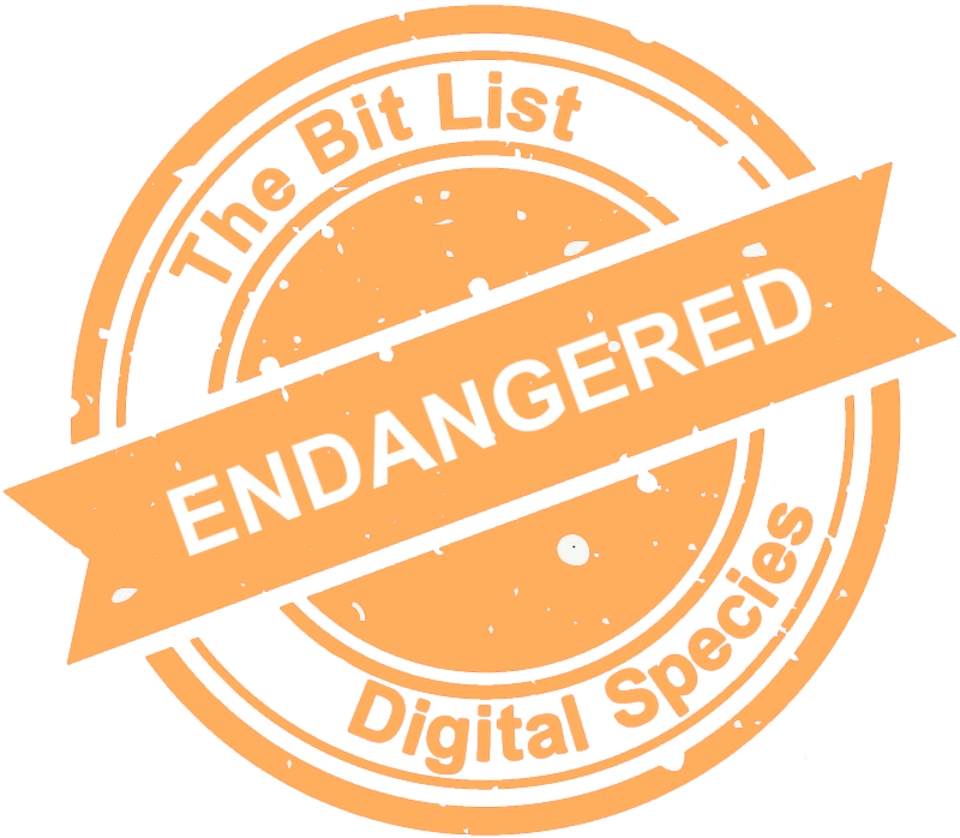Digital Music and Ephemera Shared on Social Media
 |
||
|
Digital materials created by musicians and fans as a by-product of performance or recording, shared on websites and other social media platforms. |
||
|
Digital Species: Sound and Vision, Social Media |
Trend in 2023:
|
Consensus Decision |
|
Added to List: 2019 |
Trend in 2024:
|
Previously: Endangered |
|
Imminence of Action Action is recommended within three years, detailed assessment within one year. |
Significance of Loss The loss of tools, data or services within this group would impact on people and sectors around the world. |
Effort to Preserve | Inevitability It would require a major effort to address losses in this group, possibly requiring the development of new preservation tools or techniques. |
|
Examples Fan sites; private or illicit recordings of concerts; informal music sharing between networks such as TikTok, MySpace and Facebook. |
||
|
‘Critically Endangered’ in the Presence of Aggravating Conditions Dependence on social media provider; lack of offline equivalent; uncertainty over IPR or the presence of orphaned works; unstable or small community of interest; encryption. |
||
|
‘Vulnerable’ in the Presence of Good Practice Offline equivalent; intellectual property rights conducive to preservation; partnership with collecting institutions; availability to web archiving. |
||
|
2023 Review This entry was created in 2019 as a subset of a previous 2017 entry, ‘Digital Music Production and Sharing,’ which was split to draw attention to the different challenges faced by the different forms. While there are some overlaps with other entries relating to social media as well as those relating to community-generated content, it is a separate entry to emphasize the context in which music is shared and enjoyed; this context could be lost if attention were on products controlled by studios or artists. The 2020 Jury agreed that risks remained on the same basis as before, with no change to trend. The 2021 Jury discussed content increasingly being shared across multiple platforms, which is both good and bad for risk. A multi-platform nature provides an element of protection against total loss, but the role and type of interaction with the content on each platform are also important and expanding with limited attempts at preservation. For these reasons, the 2021 trend moved towards greater risk with the need for selective approaches based on the increasing volume of material. The 2022 Taskforce noted no change to the that trend (they agreed these risks remain on the same basis as before). The 2023 Council agreed with the Endangered classification with the overall risks remaining on the same basis as before (‘No change’ to trend |
||
|
2024 Interim Review These risks remain on the same basis as before, with no significant trend towards even greater or reduced risk (‘No change’ to trend). |
||
|
Additional Comments The ephemera is increasingly stored on websites that themselves are fragile and are removed, and nothing held on these services can be relied on in archival timeframes. Web archiving and social media archiving have matured, so a representative sample is probably readily available for particular countries which are more mature in their digital preservation activities as opposed to other countries which are not. This entry also connects to other entries ‘Consumer Social Media Free at the Point of Use,’ ‘Data Posted to Defunct or Little-used Social Media Platforms’. There are similarities in regard to increased uncertainty around major social media sites, such as X (previously Twitter), and the preservation risks associated with underlying social media preservation which has an impact on the digital objects that fall under this entry, however this entry draws attention to additional risks associated with preservation of the digital forms and contexts in which these materials are shared and enjoyed. Case Studies or Examples:
|
||










































































































































